Diri Ak Djondjon – Rice With Haitian Mushrooms
Editorial Comment
Diri ak djondjon is enormously popular with Haitians. So much so, that I’ve heard one Haitian half-seriously accuse another of being a non-native for disliking this dish. I intended to post a recipe without further explanation until, to my great horror, I learned that the djondjon (Haitian mushrooms) had become scarce. They have not disappeared, but they have become scarce and expensive. There’s quite a lot of controversy online about the species of mushroom eaten in Haiti. A little research into the mycology (study of mushrooms) of the island of Hispaniola discovered that the type of mushroom in diri ak djondjon is probably Psathyrella coprinoceps. The same superb scientific article provides two delicious recipes! I abbreviated and edited the text of the article for this post. Bon appetit!
Dady Chery, Editor
Haiti Chery
The Edible Psathyrellas of Haiti
By Ángel M. Nieves-Rivera
Inoculum
Fungi have been little studied in the Caribbean in general because the indigenous population did not eat or use them for other purposes; however fungi have played an important role in Haitian cuisine for centuries. In 1993, the edible mushrooms of Haiti were identified for the first time as belonging to the genus Psathyrella.
The Psathyrella genus (Coprinaceae: Agaricales) contains 600 species, 414 of which occur in North America.
In northern Haiti there is a tradition of local commerce based on collecting, selling, and consuming a type of Psathyrella. Locally the basidiomycete (the part that grows above the ground) is called “djondjon”, the Haitian Créole word for ‘fungus’. Other variations to the name are: “djon-djon”, “dyo-dyo” or “djô-djô”, or “diondion”. This common name was thought not to refer to a particular species and to be taxonomically ambiguous.
In 2000, Dr. D. J. Lodge (USDA-Forest Service, Forest Products Lab, Luquillo, PR), identified a collection of mushrooms brought from Haiti as Psathyrella coprinoceps (subgenus Pannucia, section Candolleana).
Psathyrella coprinoceps was initially described from Cuba, but it is widely distributed in the continental U.S.A. This mushroom species fruits during the rainy season, primarily between August and October. Psathyrella coprinoceps has been reported growing on the wood of dead Erythrina species (coral trees) on the islands of Cuba, Dominica, Guadaloupe, Martinique and Trinidad. Djondjon is also reported to grow on the dry trunks of Cecropia peltata (probably pumpwood = Cecropia schreberiana).
In Haiti, a mushroom that is probably Psathyrella coprinoceps is collected in the Artibonite Department, particularly in the town of Saint Michel de l’Atalaye; the valley of the Plateau Central; and in the North Department, in the towns of Ouanaminthe and Milot.
Few surveys of mushrooms have been conducted in Haiti, but the Dominican Republic has received slightly more attention.
The Haitian djondjon was not found in surveys of the mountains in Santiago Province, in the northern Dominican Republic. Similar mushrooms are apparently not widely collected by Dominicans. It is possible that Haitians consume more than one species of Psathyrella, such as Psathyrella atricastanea (very uncertain) or Psathyrella subhyalinispora. Agaricus, Cantharellus, and other fungi are also eaten in Haiti.
Djondjon can still be found in Haitian neighborhoods, but it has become expensive. Ten years ago it cost $1 for a quarter ounce of dried fruiting bodies, or about $64 a pound (This would last years if you can find it!) in Brooklyn stores run by Korean proprietors and serving Haitian customers.
Diri Ak Djondjon – Rice With Mushrooms
This is a typical side dish from northern Haiti that is usually served together with a main course. The mushrooms (Psathyrella coprinoceps) are dried and the inedible stems removed. Once cooked, the caps of these mushrooms give the dish an exquisite color, taste, and aroma.
For efficiency, prepare the following ingredients before cooking:
(1) Two cups of long-grain rice
(2) One cup (= 1 oz) of Haitian dried mushrooms (Psathyrella coprinoceps)
(3) Two finely chopped cloves of garlic
(4) Four tablespoons of butter
(5) Salt, pepper and a little thyme
Remove and discard the inedible stipes from the mushrooms and soak the caps in a cup of hot water for 30 minutes. Sauté the rice and garlic in butter then add all other ingredients, including the water in which the mushrooms had soaked. Cook for 20 minutes.
This recipe serves six.
Ri Nwa – Haitian Black Rice
This dish is served on special occasions like birthdays, first communions, and weddings.
Place sliced mushroom caps (Psathyrella coprinoceps) in cold water for 15 to 30 minutes before cooking, and discard the inedible stipes. Cook the rice in the black water in which the mushrooms were soaked.
Both dishes are delicious, with a nutty flavor and lovely aroma.
Recipes: Courtesy of H. Montas | Photo from Haitian Recipes
VIDEO: Preparation of Diri ak Djondjon (courtesy of saxygurl18, 9 min)
Sources: Inoculum, Vol. 52, Feb 2001; Newsletter of the Mycological Society of America, Supplement to Mycologia | Abbreviated and edited text by Haiti Chery |Text, photos, and video assembled by Haiti Chery


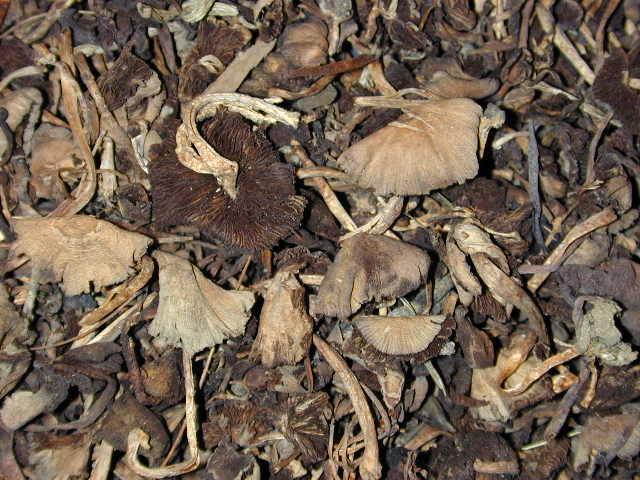
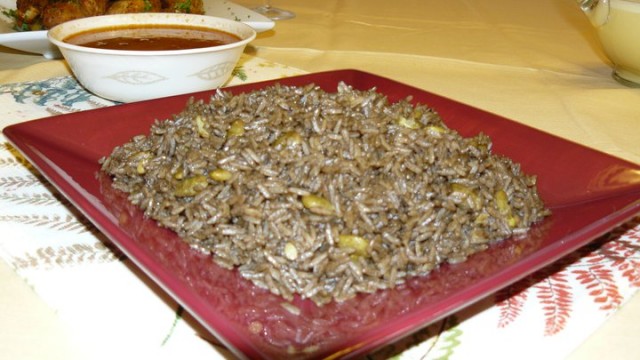

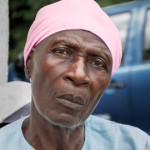
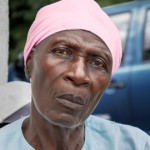
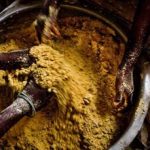
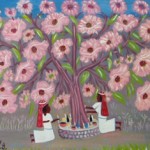
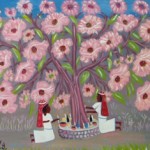
Comments
Diri Ak Djondjon – Rice With Haitian Mushrooms — No Comments